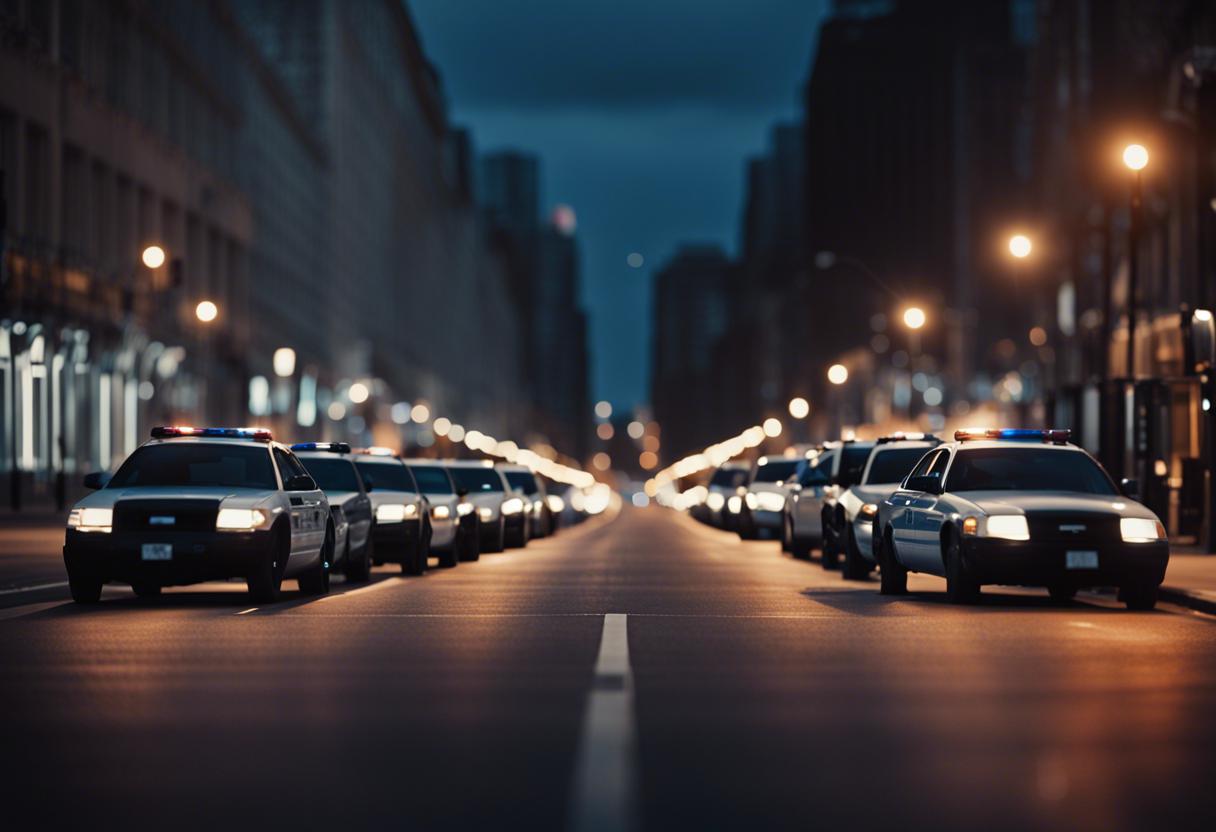In Northern Ireland, numerous Orange Order processions are currently in progress, marking what is essentially the peak day for law enforcement throughout the year, having more than 4,000 police officers in service. The Police Service of Northern Ireland (PSNI) has put into action two-thirds of its entire members to manage parades that are drawing large crowds, running into tens of thousands. The previous year’s Twelfth policing operation had resulted in a bill exceeding £4.5m.
Despite the peaceful commencement of Friday morning’s activities, there are apprehensions surrounding possible strained situations later in the day in the northern Belfast region, given the prohibition by the Northern Ireland Parades Commission on three Orange Order associations from passing the Ardoyne shops with nationalist associations. This boundary region had been the hotspot for some of the most severe sectarian summer conflicts until a settlement between the two factions was reached in 2016, and peace has prevailed since then.
The Parades Commission has also disapproved of an Orange Order procession passing through the area on Saturday morning. Following last month’s breach of the 2016 agreement, the PSNI stated it perceived no indications of a desire for turmoil.
Rev Mervyn Gibson, Grand Secretary of the Orange Order, reiterated on Friday morning that he did not perceive any inclination for aggression, certainly from his side and seemingly from others as well. Yet he cautioned that “relationships are possibly the worst they have been in the past two decades”. He attributed this to numerous factors, including political tensions around calls for a unified Ireland and other related issues.
The Orange Order leader expressed his desire for a peaceful day that everyone can savour, adding that the Ardoyne issue needed resolving as soon as possible following the Twelfth of July.
On Thursday night, bonfires with Tricolour flag and nationalist politicians’ electoral posters were ignited in certain parts of the North. Compared to past years, this was described by the fire service as relatively calm. An estimated 300 bonfires were kindled as a prelude to Friday’s parades. These celebrations commemorate the 1690 Battle of the Boyne, where Protestant William III triumphed over Catholic James II.
A sectarian warning, “ATAT” – meaning “all taigs are targets” – was boldly marked on a pyre located in Belfast. In Rathcoole, Newtownabbey, which is known for its loyalist leanings, a SDLP leader Colum Eastwood figure graced a bonfire. Confirmation came from local law enforcement that they were treating the actions aimed at Mr. Eastwood as a hate crime, following threats made against him that were discovered on the pyre.
In response, Eastwood expressed his disappointment at the normalisation of these sectarian yearly events and encouraged leaders in the unionist party to take a more aggressive stance to shift people’s behaviours. He communicated to the BBC his belief that celebrating the Twelfth was something to be encouraged but concurrently, it’s unacceptable for people to feel they can do as they please. He publicly stated there were aspects of the event clearly driven by hate.
Other effigies caught in the crosshairs included those of Sinn Féin First Minister Michelle O’Neill and SDLP MP Claire Hanna. These, alongside banners censuring the Irish News and Belfast Telegraph newspapers, were featured on another bonfire in south Belfast. Following the Eleventh night bonfires observed last year, police noted 68 incidences, with 21 labelled as suspected hate crimes involving the burning of election posters or effigies, and 47 likely hate-related incidents including flag burnings. There weren’t any prosecutions, however.
In Moygashel, near Dungannon in Co Tyrone, one of the pyres featured a fake car belonging to the PSNI. Hundreds spectated as the fire burned away, revealing a Tricolour and a banner with the phrase “Saoirse don Phalaistin” (“Freedom for Palestine”).
Northern Ireland’s Fire and Rescue Service reportedly managed over 100 emergency 999 calls from 6pm on Thursday evening. According to Brian Stanfield, an assistant chief fire and rescue officer: “From 6pm till 2am, it was a relatively calm Eleventh night, with the service responding to 109 emergency 999 calls.”
As a result of these happenings, our fire brigade responded to a total of 78 tactical episodes, with 37 of them pertaining to bonfires. In that duration, there was a 25 percent decrease in the total urgent calls received, compared to the year 2023. The highest action occurred between the hours of 10pm and 1am, while standard emergency services were sustained across Northern Ireland.

